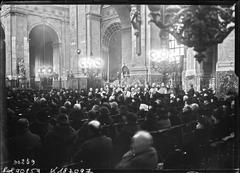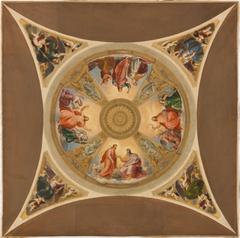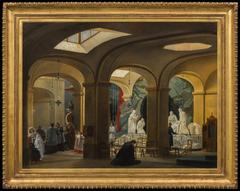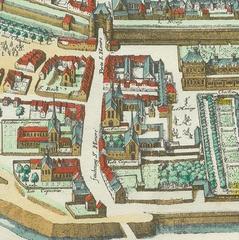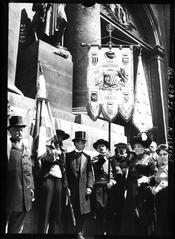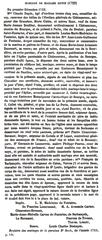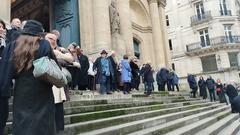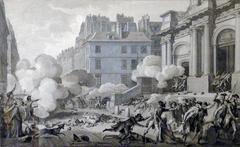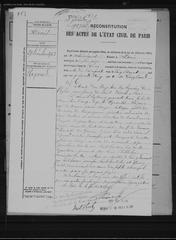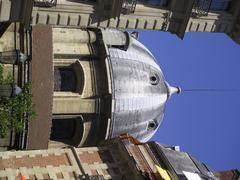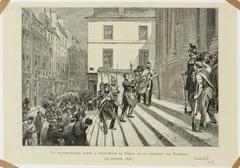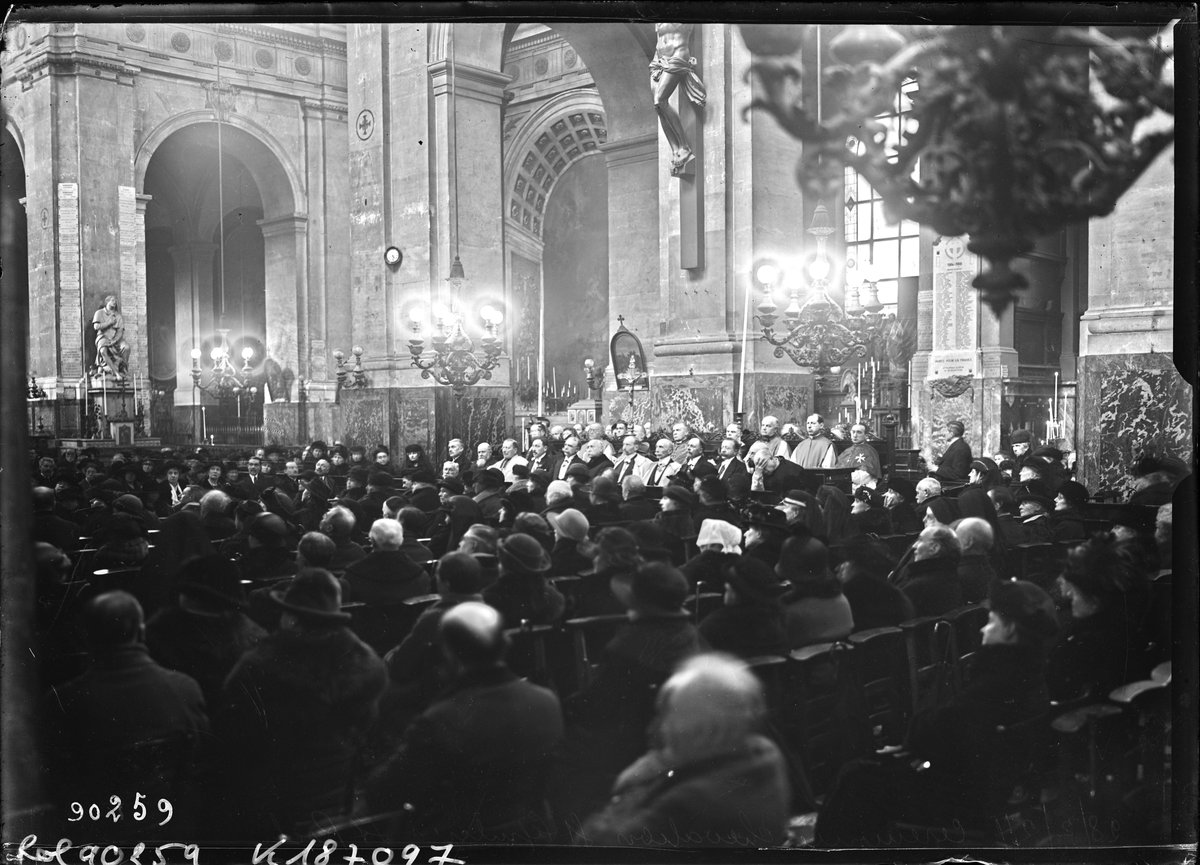
Saint-Roch Paris: Visiting Hours, Tickets, and Historical Significance Guide
Date: 14/06/2025
Introduction
Église Saint-Roch, located in the heart of Paris’s 1st arrondissement, is a stunning showcase of Baroque architecture and a living monument to the city’s religious, artistic, and cultural legacy. Founded in the mid-17th century and completed in the early 18th, the church is renowned not only for its imposing façade and ornate chapels but also for its pivotal role in Parisian civic and artistic history. From its origins as a sanctuary invoked against the plague to its evolution into the “parish of artists,” Saint-Roch invites visitors to experience the layered narratives that define the capital’s heritage (Wikipedia; SpottingHistory; Sortir à Paris).
Whether you are an art enthusiast, history buff, music lover, or spiritual seeker, Saint-Roch offers a multifaceted experience—rich with art, music, and centuries of Parisian stories. This guide provides all the practical and historical information you need, including visiting hours, ticketing, accessibility, guided tours, and travel tips for a memorable visit. Find out how to make the most of your time at one of Paris’s largest and most culturally significant churches, ideally situated near landmarks such as the Louvre Museum and Palais Royal (paroissesaintroch.fr; Paris Convention and Visitors Bureau).
Table of Contents
- Historical Overview
- Artistic Masterpieces and Decorative Highlights
- Saint-Roch’s Role in Parisian Religious and Civic Life
- Visiting Information
- Accessibility and Facilities
- Nearby Attractions
- Visitor Experience
- Frequently Asked Questions (FAQ)
- Visuals and Media
- Conclusion
- Call to Action
- References
Historical Overview
Origins and Early Development
Église Saint-Roch’s origins date back to 1521, when a chapel dedicated to Saint Susanna was established in the then-suburban faubourg Saint-Honoré. By the late 16th century, the growing population prompted the Dinocheau family to expand the site and rededicate it to Saint Roch, whose invocation against plague reflected the anxieties of the time (Wikipedia; SpottingHistory). Elevation to parish status came in 1629, with the church serving a large district north of the Tuileries.
Architectural Evolution
Construction and Baroque Design
The present church was designed by Jacques Lemercier, the celebrated architect of the Sorbonne and Louvre, with its foundation stone laid by King Louis XIV in 1653. The Latin cross floor plan, barrel vaults, and dome at the crossing typify the French Baroque style. Construction was periodically interrupted by financial strain and the Fronde, but major additions—such as the Lady Chapel, Communion Chapel, and Baroque portal—were eventually completed under the guidance of architects including Hardouin-Mansart and Robert de Cotte. The result is a church 126 meters long, among the largest in Paris (Places in France; Sortir à Paris).
Historical Events
Saint-Roch’s façade still bears scars from the 13 Vendémiaire uprising of 1795, when Napoleon Bonaparte’s artillery fire suppressed Royalist insurgents here—a pivotal episode in French Revolutionary history (Bonjour Paris). The church was ransacked during the Revolution but later restored, retaining many artistic treasures recovered from destroyed convents and churches.
Artistic Masterpieces and Decorative Highlights
The church is famed for its succession of chapels, each richly adorned with paintings, sculptures, and intricate Baroque ornamentation. Noteworthy highlights include:
- Chapelle de la Vierge (Virgin Chapel): Features an oval dome and Jean-Baptiste Pierre’s monumental “Triumph of the Virgin,” surrounded by gilded stuccoes (Sortir à Paris).
- Calvary Chapel: Houses a dramatic Crucifixion by Jehan Du Seigneur, an altar by Michel Anguier, and an Entombment by Louis Pierre Deseine (Visiting Paris By Yourself).
- Main Altar: Above it is Anguier’s “The Nativity of Val-de-Grâce” and Falconet’s “Gloire Divine,” a swirling Baroque ensemble of rays and cherubs.
- Sculptures: Works by Falconet, Lemoyne, and Adam, as well as funerary monuments for figures like François de Créquy and Pierre Mignard, transferred from other Parisian sanctuaries.
Modern visitors are also captivated by the church’s stained glass windows, particularly in the Virgin Chapel, and its collection of paintings by masters such as Delacroix and Fragonard (Thrillophilia).
Saint-Roch’s Role in Parisian Religious and Civic Life
Saint-Roch has been both a place of worship and a cultural landmark. Its dedication to Saint Roch made it a site of communal prayer during plagues, and over centuries it has become a symbol of hope and resilience for Parisians (paris.fr). The church’s identity as the “parish of artists” is reflected in its chaplaincy for the creative community and the burial of luminaries such as Corneille, Fragonard, and Diderot (Offi.fr).
Saint-Roch is also a respected music venue, hosting sacred music concerts and recitals on its grand organ—an 18th-century masterpiece by the Clicquot family, later restored by Aristide Cavaillé-Coll (Sortir à Paris).
Visiting Information
Opening Hours
- Daily: 8:30 AM to 7:00 PM
- Note: Hours may vary on public holidays and for special religious services (paroissesaintroch.fr).
Tickets and Admission
- Entry: Free for all visitors.
- Donations: Appreciated to support preservation and programming.
Mass Schedule
- Weekdays: Multiple masses in French and Latin.
- Sundays: Several services, including anticipated and Latin masses (paroissesaintroch.fr).
Guided Tours
Guided tours are available by prior arrangement through the parish office or via local tour agencies. Audio guides may also be available on-site.
Dress Code and Etiquette
- Modest attire is required (shoulders and knees covered).
- Silence is appreciated, especially during services.
- Photography is generally permitted, but be respectful during religious ceremonies.
Accessibility and Facilities
- Wheelchair Access: Entrances equipped with ramps; accessible parking is available (mybestparis.com).
- Restrooms: On-site.
- Parish Office: Open Monday to Friday, 15:00–17:00 (except during school holidays).
- Languages: Services mainly in French and Latin; limited English spoken by staff.
Nearby Attractions
Saint-Roch’s central location makes it an ideal starting point for exploring:
- Louvre Museum
- Tuileries Garden
- Palais Royal
- Place Vendôme
- Musée des Arts Décoratifs
Metro stations Palais Royal – Musée du Louvre (Lines 1, 7), Pyramides (Lines 7, 14), and Tuileries (Line 1) are all nearby.
Visitor Experience
Visitors praise Saint-Roch for its serene ambiance, artistic splendor, and historical atmosphere. Its acoustics are ideal for concerts, and its chapels provide a contemplative escape from city bustle (mybestparis.com).
Frequently Asked Questions (FAQ)
Q: What are the opening hours?
A: Daily from 8:30 AM to 7:00 PM.
Q: Is there an entrance fee?
A: No, entry is free.
Q: Are guided tours available?
A: Yes, by prior arrangement.
Q: Is the church accessible for wheelchair users?
A: Yes, with accessible entrances and parking.
Q: Can I attend a concert?
A: Yes, check the parish or event websites for schedules.
Q: Is photography allowed?
A: Yes, but be discreet, especially during services.
Visuals and Media
 Alt text: Façade of Église Saint-Roch, Paris
Alt text: Façade of Église Saint-Roch, Paris
 Alt text: Interior view of Église Saint-Roch, displaying nave and chapels
Alt text: Interior view of Église Saint-Roch, displaying nave and chapels
Virtual Tour of Église Saint-Roch via Google Arts & Culture.
Conclusion
Église Saint-Roch stands as a vibrant testament to Paris’s spiritual, artistic, and civic history. Its Baroque architecture, masterful artworks, and ongoing cultural life make it an essential stop for anyone interested in the city’s heritage. With free admission, central location, and a welcoming atmosphere, Saint-Roch invites you to discover Paris’s multifaceted legacy—whether through quiet reflection, exploration of its chapels, or attendance at a stirring concert.
Call to Action
Plan your visit to Saint-Roch with the Audiala app for up-to-date hours, guided tours, and insider tips. Explore more historical sites in Paris, and follow us on social media for event updates and curated cultural content.
References
- This is a sample text. (SpottingHistory)
- This is a sample text. (Wikipedia)
- This is a sample text. (Sortir à Paris)
- This is a sample text. (Offi.fr)
- This is a sample text. (Bonjour Paris)
- This is a sample text. (Visiting Paris By Yourself)
- This is a sample text. (Paris Convention and Visitors Bureau)
- This is a sample text. (paroissesaintroch.fr)
- This is a sample text. (mybestparis.com)
- This is a sample text. (Thrillophilia)
- This is a sample text. (Roaming Paris)
